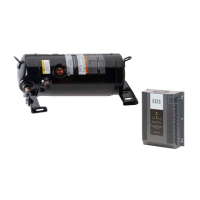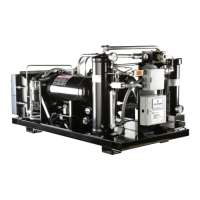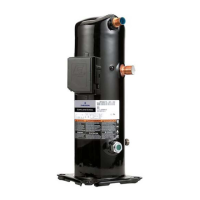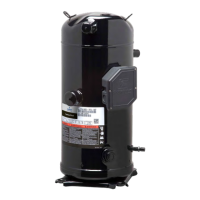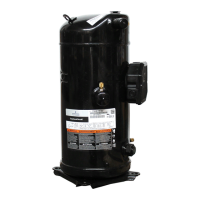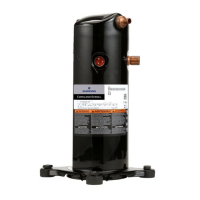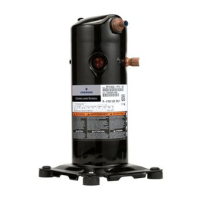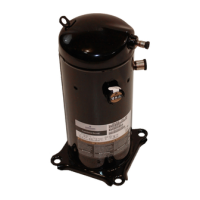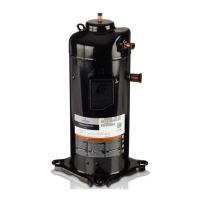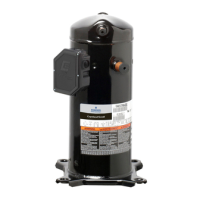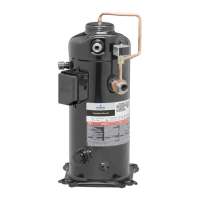AGL_HP_VS_YHV2P_E_Rev0 25
Any modification to compressor connections can have an impact on the compressor tightness.
Always leak-pressure test the compressor after opening the system or modifying the connections.
If using dry air do not include the compressor in the leak test – isolate it first. Never add refrigerant
to the test gas (as leak indicator).
5.3 Preliminary checks – Pre-starting
WARNING
Air/A2L refrigerant mixture in a potentially flammable or explosive
atmosphere! Fire and explosion hazard! Whenever starting up a system
charged with A2L refrigerant, eg, after filling, repair, or maintenance, make
sure not to start and operate accidentally in a flammable or explosive
atmosphere.
Discuss details of the installation with the installer. If possible, obtain drawings, wiring diagrams, etc.
It is ideal to use a check-list but always check the following:
▪ No explosive atmosphere or flammable gas in the ambient
▪ Suitable ventilation according to the room volume and to the refrigerant charge
▪ Visual check of the electrics, wiring, fuses etc.
▪ Visual check of the plant for leaks, loose fittings such as TXV bulbs etc.
▪ Compressor oil level
▪ Calibration of HP & LP limiters and any pressure actuated valves
▪ Check setting and operation of all safety features and protection devices
▪ All valves in the correct running position
▪ Pressure and compound gauges fitted
▪ Correctly charged with refrigerant
▪ Compressor electrical isolator location & position
5.4 Charging procedure
WARNING
Air/A2L refrigerant mixture in a potentially flammable or explosive
atmosphere! Fire and explosion hazard! Only use filling equipment
designed and approved for use and operation with A2L refrigerants. Make sure
all connections are tight to avoid leakage. Make sure to fill with pure A2L
refrigerant.
CAUTION
Low suction pressure operation! Compressor damage! Do not operate
with a restricted suction. Do not operate with the low-pressure cut-out bridged.
Do not operate the compressor at pressures not allowed by the operating
envelope. Allowing the suction pressure to drop below the envelope limit for
more than a few seconds may overheat scrolls and cause early drive bearing
and moving parts damage.
Prior to charging or re-charging, the system must be leak- and pressure-tested with appropriate
purging gas.
Ensure that the refrigerant system is grounded prior to charging with refrigerant.
The system should be liquid-charged through the liquid-receiver shut-off valve or through a valve in
the liquid line. The use of a filter drier in the charging line is highly recommended. Since scrolls have
discharge check valves, systems should be liquid-charged on both the high and low sides
simultaneously to ensure a positive refrigerant pressure is present in the compressor before it runs.
The majority of the charge should be placed in the high side of the system to prevent bearing washout
during first-time start on the assembly line.
Extreme care shall be taken not to overfill the refrigerant system.
The system manufacturer/installer must respect the charge limitations according to valid standards,
such as EN 378.
5.5 Run-in time
Scroll compressors exhibit a slight decrease in input power during the initial running period.
Published performance ratings are based on calorimeter testing which is carried out after run-in.
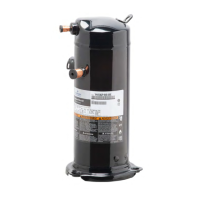
